What Will a 2000 Watt Solar Generator Run?
ZacharyWilliamIf you are shopping for backup power or an off-grid setup, you will quickly see a common question: “What will a 2000 watt solar generator run?” A 2000 W (2 kW) solar generator sits in the sweet spot between small camping batteries and whole-home backup systems. It can handle real appliances, but there are limits you should understand before you buy.
In this guide, we will break down exactly what a 2000 W solar generator can run, how long it can run those loads, and how it compares with slightly smaller units like the UDPOWER S1200 portable power station. The goal is to give you clear, no-nonsense guidance so you can size your system with confidence.

Table of Contents
- What Is a 2000 Watt Solar Generator?
- Key Specs That Matter (Beyond 2000 W)
- What Will a 2000 Watt Solar Generator Run?
- Appliance Compatibility Table
- How Long Will It Run Common Appliances?
- Best Real-World Use Cases for a 2000 W Solar Generator
- Where UDPOWER Fits In (1,200 W Class)
- Buying & Safety Tips Before You Choose
- FAQs About 2000 Watt Solar Generators
What Is a 2000 Watt Solar Generator?
A 2000 watt solar generator is usually a large portable power station paired with solar panels. The “2000 W” number refers to the continuous AC output of its inverter — in other words, the maximum power it can safely deliver to connected appliances at one time.
Under the hood, a solar generator combines:
- Battery pack (measured in watt-hours, Wh) — this is your “fuel tank.”
- Inverter (measured in watts, W) — converts battery DC to household 120 V AC power.
- Solar charge controller — lets you plug in solar panels to recharge from the sun.
- AC, DC, USB, and sometimes wireless outputs for all your devices.
Key Specs That Matter (Beyond 2000 W)
When you compare 2000 W solar generators, do not stop at the wattage number on the front. Pay attention to at least four critical specs:
-
Battery capacity (Wh or kWh)
Many 2 kW solar generators have 1500–3000 Wh of storage. Think of this as the size of your fuel tank. A 2000 Wh battery running a 2000 W load will last about an hour (less after efficiency losses). -
Surge or peak output (W)
Motors and compressors (refrigerators, AC units, some power tools) draw a brief surge when they start. You want a generator whose surge rating comfortably exceeds those starting watts. -
Battery chemistry
Modern units increasingly use LiFePO₄ (LFP) batteries, which offer much longer cycle life than older NMC chemistries and better performance for frequent use and deep discharges. -
Solar input (W)
The higher the solar input, the faster you can recharge during the day. A big 2000 W inverter is only as useful as your ability to refill the battery.
What Will a 2000 Watt Solar Generator Run?
In simple terms, a 2000 W solar generator can run most household plug-in devices that you would normally connect to a standard 120 V wall outlet — as long as the total draw stays under the inverter’s continuous and surge ratings.
1. Refrigerators and Freezers
Most modern full-size refrigerators use roughly 300–800 W when actively running, with starting surges that can approach or exceed 1000–2000 W for a split second. A 2000 W solar generator with a healthy surge rating is generally capable of:
- Running one full-size refrigerator reliably.
- Running a refrigerator and a small freezer together, if other loads are modest.
- Supporting mini-fridges and beverage fridges with plenty of headroom.
For blackout protection, many homeowners choose a 2000 W-class system specifically to keep food, medicine, and drinks cold plus a few essential electronics.
2. Kitchen Appliances
Kitchen devices are often the heaviest energy users in a home. Typical wattages look like this:
- Microwave ovens: roughly 800–1500 W while cooking.
- Drip coffee makers: around 600–1200 W while brewing.
- Toasters and toaster ovens: ~800–1500 W.
- Electric kettles: often 1200–1500 W.
A 2000 W solar generator can usually run any one of these appliances on its own, with enough headroom for a few small loads (lights, phone charging, Wi-Fi). You generally would not want to run a microwave, coffee maker, and toaster all at the same time on a 2000 W inverter.
3. Heating and Cooling Loads
Heating and air conditioning are some of the toughest loads to run off a battery-based system:
- Window AC units: smaller 5000–8000 BTU window ACs often draw around 400–800 W while running, with higher start-up surges. A 2000 W solar generator with good surge capacity can handle one small-to-medium window AC.
- Fans and evaporative coolers: usually 40–150 W, easy loads for a 2000 W system.
- Electric space heaters: often 1500 W on “high.” A 2000 W unit can run one heater, but it will drain the battery quickly.
In most cases, a 2000 W solar generator is better used for targeted comfort (one room AC or a fan) rather than whole-house heating or cooling.
4. Electronics, Networking, and Medical Devices
These are the easiest loads for a 2000 W solar generator and the reason many people buy one in the first place:
- Wi-Fi router and modem (20–40 W)
- Laptops and tablets (30–100 W each)
- Phones and small USB gadgets (under 20 W each)
- TVs and streaming boxes (80–200 W)
- CPAP machines and other small medical devices (often under 80 W)
A 2000 W system can run all of those together with plenty of power to spare. Battery capacity and runtimes become more important than inverter size here.
5. Power Tools and Worksite Loads
Many handheld and medium-duty tools fit comfortably under a 2000 W ceiling:
- Drills, drivers, rotary tools (typically under 800 W)
- Circular saws and miter saws (often 1200 W or less, with higher startup surge)
- Small air compressors or shop vacuums (can approach or exceed 1200–1500 W)
Here, surge rating and duty cycle matter. A 2000 W solar generator can make a great quiet worksite power source for intermittent tool use, charging batteries, lighting, and running small electronics.
6. What It Will Not Run Well
Even with 2000 W of inverter power, there are some loads that are usually off the table:
- Central air conditioning systems and large heat pumps.
- Electric ovens and ranges (often 3000–5000 W or more).
- Electric clothes dryers and large water heaters.
- Level 2 EV chargers.
For those loads, you would need either a larger, more complex battery system, a traditional fuel generator, or a hybrid approach tied into your home wiring.
Appliance Compatibility Table
The table below shows how a 2000 W solar generator typically handles common household and RV loads. Exact numbers will vary by model and brand, but this gives you a realistic starting point.
| Appliance / Device | Typical Power Draw (Running) | Will a 2000 W Solar Generator Run It? |
|---|---|---|
| Phone charger | 5–20 W | Yes, dozens at once. |
| LED lights (whole room) | 20–80 W | Yes, with plenty of headroom for other loads. |
| Wi-Fi router + modem | 20–40 W | Yes, easy load for long runtimes. |
| Laptop | 40–100 W | Yes, multiple laptops plus other devices. |
| CPAP machine (no heated humidifier) | 30–60 W | Yes, ideal for overnight backup. |
| Mini fridge | 50–100 W | Yes, often alongside lights and electronics. |
| Full-size refrigerator | 300–800 W (with higher startup surge) | Yes for most models, as long as surge rating is adequate and you avoid other large loads while it starts. |
| Microwave oven | 800–1500 W | Yes, typically one at a time with only small additional loads. |
| Drip coffee maker | 600–1200 W | Yes, single appliance operation is recommended. |
| Portable / window AC (small) | 400–800 W (higher startup surge) | Usually yes for one unit, depending on surge rating and efficiency. |
| Electric space heater | 1000–1500 W | Yes, but runtime will be short on battery-only power. |
| Electric oven / range | 3000–5000 W+ | No, this exceeds a 2000 W inverter’s capacity. |
| Central AC | 3000 W+ | No, generally not suitable for a 2000 W solar generator. |
How Long Will It Run Common Appliances?
To estimate runtime, you can use a simple formula:
Runtime (hours) ≈ Battery capacity (Wh) × 0.85 ÷ Load (W)
The 0.85 factor accounts for typical inverter and battery losses. Below are approximate runtimes for two common battery sizes: a 2000 Wh (2 kWh) pack and a 3000 Wh (3 kWh) pack.
| Load Scenario | Approx. Power | 2 kWh Battery | 3 kWh Battery |
|---|---|---|---|
| Wi-Fi + router + a few lights | 50 W | About 30–35 hours | About 45–50 hours |
| Single CPAP machine (no heated humidifier) | 40–60 W | Roughly 25–35 hours | Roughly 40–50 hours |
| Mini fridge | 60–80 W (average) | About 20–30 hours | About 30–40 hours |
| Full-size refrigerator (average over a day) | 120–200 W (average duty cycle) | Roughly 8–15 hours | Roughly 12–20 hours |
| Small window AC or electric heater | 600–800 W | About 2–3 hours of continuous use | About 3–5 hours of continuous use |
| Microwave or coffee maker (intermittent) | 1000–1500 W | About 1–2 hours if run continuously, but in real life these are used in short bursts. | About 2–3 hours if run continuously. |
Best Real-World Use Cases for a 2000 W Solar Generator
1. Short Home Power Outages
For most households, a 2000 W solar generator is ideal for bridging short grid outages. Think storms, rolling blackouts, or temporary work on local power lines.
In that scenario, many people prioritize:
- Refrigerator and/or small freezer.
- Internet router and modem.
- LED lights in key rooms.
- Phones, laptops, and possibly a TV.
If you keep the focus on essentials, a 2000 W system with enough battery capacity can keep you reasonably comfortable through outages that last hours or even most of a day, especially with decent solar input.
2. RVs, Vans, and Travel Trailers
Many RV owners look at 2000 W solar generators as the heart of a 12 V and 120 V off-grid system. With the right wiring and safety precautions, they can power:
- 12 V RV fridge or efficient AC/DC fridge.
- Water pump, fans, and LED lights.
- Electronics, Starlink or other satellite internet, and entertainment systems.
- Occasional microwave or coffee maker use.
Many RVers still rely on propane for heavy heating and cooking, using the solar generator as a quiet “all-day battery” for everything else.
3. Off-Grid Cabins and Tiny Homes
For a small cabin or tiny home with efficient appliances, a 2000 W solar generator can serve as a primary power hub. The key is to pair it with:
- Right-sized solar arrays and charge controllers.
- Efficient lighting, fans, and refrigeration.
- Non-electric heating and hot water solutions where possible.
4. Worksites, Outdoor Events, and Mobile Businesses
For contractors, food trucks, event vendors, and mobile creators, a 2000 W solar generator offers:
- Enough power for laptops, cameras, monitors, and lighting.
- Intermittent operation of heavier tools or kitchen equipment.
- Quiet, fume-free operation compared to gasoline generators.
Where UDPOWER Fits In (1,200 W Class)
UDPOWER’s current lineup focuses on portable power stations in the 200–1200 W class, which covers a large part of what many people expect from a 2000 W solar generator — especially if you are not trying to run multiple heavy appliances at once.
UDPOWER S1200: A Practical Alternative for Many 2000 W Use Cases

The UDPOWER S1200 portable power station is a good example of a high-output, battery-based system designed for home backup, RV use, and outdoor power. Key specs from the official UDPOWER site include:
- Battery capacity: about 1190 Wh (LiFePO₄, long-life cells).
- AC output: 1200 W rated with up to 1800 W surge (pure sine wave).
- Outputs: 5 AC outlets plus multiple USB-A, USB-C, DC, car port, and wireless charging (15 total ports).
- UPS function: switchover time under 10 ms for sensitive electronics.
- Solar input: up to 400 W (12–75 V, 12 A max) with MPPT for efficient solar charging.
- Fast charging: up to roughly 800 W input from the wall for rapid recharging.
While the S1200 is not a full 2000 W inverter, its 1200 W continuous / 1800 W surge capability still allows it to:
- Run most refrigerators, mini-fridges, and freezers.
- Power CPAP machines, routers, modems, lights, and laptops for extended outages.
- Handle intermittent use of coffee makers, microwaves, and many power tools within its output limits.
Paired with UDPOWER’s portable solar panels (120 W, 210 W, or 420 W options), the S1200 can refill in only a few hours under good sun, making it a practical everyday backup system for many households that do not truly need a full 2000 W inverter.
If you know you will consistently run multiple high-draw appliances at the same time or want to power heavier loads like large AC units or power-hungry tools, a dedicated 2000 W (or larger) solar generator may still make sense. But for a lot of real-world scenarios — especially emergency backup and RV use — something in the 1000–1200 W class, like UDPOWER S1200, already covers the critical essentials.
Buying & Safety Tips Before You Choose
-
List your must-run devices first.
Write down the exact appliances you care about in an outage or off-grid scenario. Look up their wattage labels (including surge ratings for motor loads) and add them up. -
Match battery size to your runtime goals.
If you want to run a fridge, router, and some lights for 24 hours, you will likely need a battery in at least the 2000–3000 Wh range plus solar input, not just a large inverter. -
Pay attention to surge (peak) output.
Many 2000 W units list a surge rating of 3000 W or more. That surge margin is critical for starting refrigerators, well pumps, and some power tools. -
Think about noise, ventilation, and placement.
Battery-based solar generators are quiet and emission-free, so they are safe to use indoors when properly ventilated and kept dry. Still, follow the manufacturer’s guidelines and keep them away from children and pets. -
Plan for expansion.
If you are starting with a smaller unit like the UDPOWER S1200, consider how you might expand later (extra panels, additional power stations, or a separate larger inverter system) as your needs grow.
FAQs About 2000 Watt Solar Generators
Is a 2000 W solar generator enough to run a refrigerator?
For most modern household refrigerators, yes. As long as the generator’s surge output can handle the compressor start-up and you are not running too many other big appliances at the same time, a 2000 W unit can usually handle one full-size fridge plus a few smaller loads.
Can a 2000 W solar generator run air conditioning?
It can often handle one small, efficient window or portable AC unit, especially in the 5000–8000 BTU range, provided the surge rating is high enough. Whole-house central AC systems and large split units are typically beyond what a 2000 W inverter can support.
How many solar panels do I need for a 2000 W solar generator?
It depends on the generator’s maximum solar input. Many large units accept 400–1000 W of solar. For example, if your solar input is 400 W and you have good sun for about 5 hours per day, you might harvest roughly 2000 Wh of energy — enough to fully recharge a 2 kWh battery in ideal conditions.
What is the difference between a 1200 W and a 2000 W solar generator?
Both can use similar batteries and may even have similar capacities, but a 2000 W inverter can run larger loads at the same time. A 1200 W unit like the UDPOWER S1200 focuses on the most common essentials: refrigerators, routers, lights, CPAPs, and intermittent kitchen appliances. A 2000 W system gives you more headroom for space heaters, larger AC units, or running multiple heavy appliances at once.
How long will a 2000 W solar generator last?
Runtime is determined by the battery capacity and the size of your loads. A 2 kWh battery running a 400 W average load might last around 4 hours, while a 3 kWh battery at the same load could last around 6 hours, before considering solar input. Long-life LiFePO₄ batteries can handle thousands of charge cycles, which is important if you plan to use the system frequently.
Whether you end up with a full 2000 W solar generator or a slightly smaller system like the UDPOWER S1200, the most important step is to match the system to your real-world loads and runtime goals. Once you understand what a 2000 W system can run, you can size your solar generator with confidence and avoid expensive over- or under-buying.


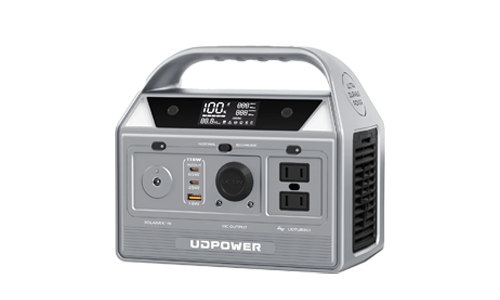
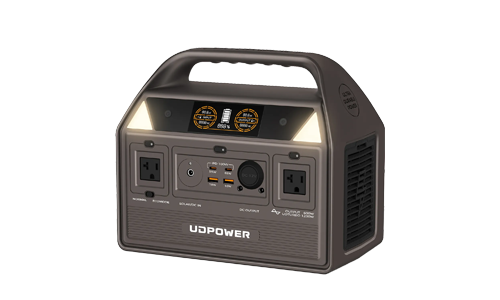
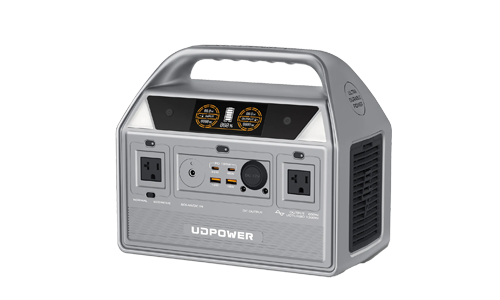


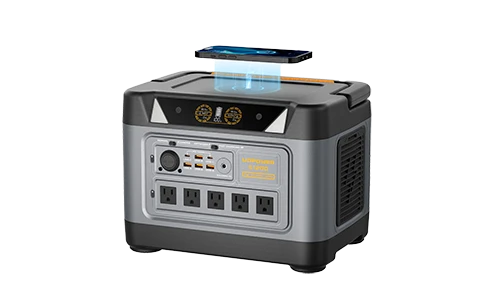



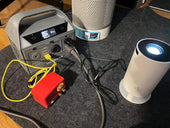
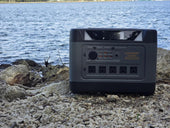
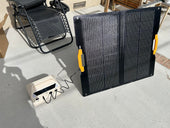









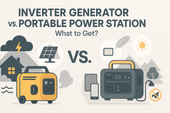
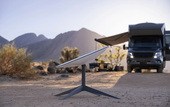



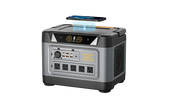







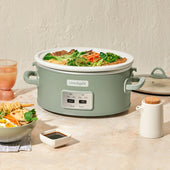






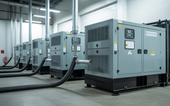
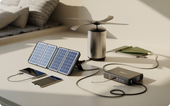

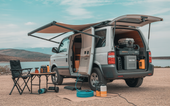

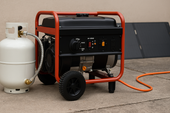
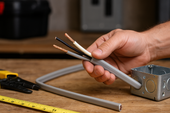
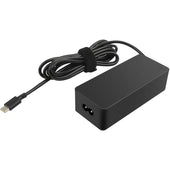

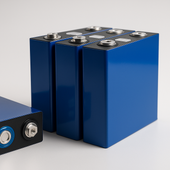


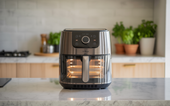


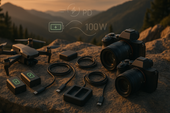





![How to Live In The Woods [Complete Guide]](http://udpwr.com/cdn/shop/articles/Off-Grid_Cabin_Option_f6c94fe7-1ae7-4c3a-baf5-ed9fe684c832.png?v=1763523215&width=170)




